
Building and sustaining powerful customer experiences is pivotal for leaving a positive impact on users and building strong customer relationships. When businesses focus their efforts on creating customer centric experiences, they often face issues with user testing. Partly, because the process solicits garnering a substantial amount of technical and human resources. This is what UserTesting solves for businesses. It offers a one-stop solution for validating and testing customer experiences without having to invest in the resources. However, UserTesting isn’t the only tool that can help you with this. There are other powerful UserTesting alternatives that cater to a varied set of needs and offer flexible plans to accommodate a spectrum of budget requirements.
This article brings to light 5 UserTesting alternatives that offer comparable feature sets, utility and flexibility. Based on your needs as a business, you can pick any one of them. We have sub categorised each alternative tool into sub-sections, including pros and cons of the tool when compared to UserTesting, so that you can make your decision quickly and conveniently.
However, before we dive into the meat of the article, let’s start by answering why we need an alternative to UserTesting in the first place?
Decoding the Need for UserTesting Alternatives
Let’s look at the core offerings of UserTesting. They are qualitative research, moderated research, running live videos, and autonomous recordings. The platform also boasts a participant pool of over 1 million. However, the sheer size of the platform is what makes it less accessible for small or medium sized businesses. If you’re a medium sized business that only needs to run a few unmoderated testing projects with a handful of participants, UserTesting isn’t the place you would want to do that. It has a fairly high pricing model, even though we weren’t able to find the pricing on the website, one of their clients disclosed that it was close to $30,000/seat/year in 2023.
Moreover, since UserTesting is optimised for qualitative research, users have to put in extra effort to organise data for quantitative research. While other tools on the list automatically organise data into downloadable PDFs offering a more convenient quantitative research experience.
Also, if you’re a business with a suite of market research tools, you might not be able to integrate UserTesting with them as it only integrates with a small number of tools like AdobeXD, Canva, and Jira. Note that UserTesting doesn’t let you have projects with shared ownership restricting collaborative efforts on research projects.
Keeping in mind the points made here, small and medium sized businesses are better off relying on alternative user testing tools.
Top 5 UserTesting Alternatives to Look Out for In 2024
-
Hotjar
If your goal is to optimise the user experience of your website and identify areas that need improvement, Hotjar is the perfect pick for you. Hotjar’s core offerings include click, tap, and scroll heatmaps, session recordings, surveys and feedback polls, form analytics, and custom widgets that allow users to leave feedback directly on the website. We’re aware that UserTesting as a tool offers far more utility and a much broader feature set, but there are scenarios where it would make perfect sense for medium and small sized businesses to opt for Hotjar instead of UserTesting.
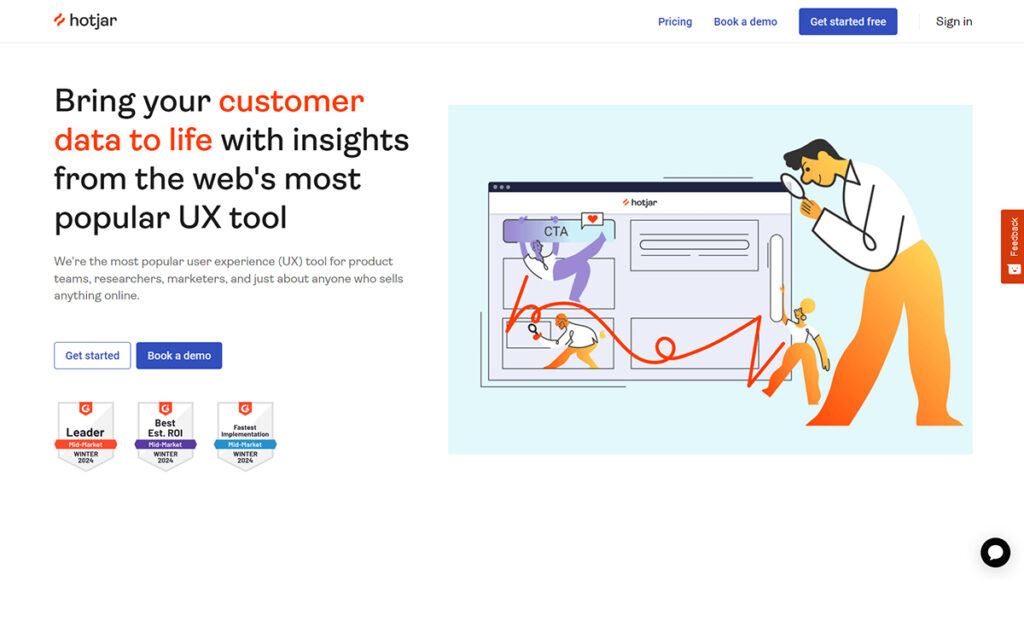
- Hotjar is more affordable compared to UserTesting, making it a suitable option for businesses with budget constraints.
- It offers ongoing analytics and insights into user behaviour through features like heatmaps, session recordings, and form analytics. This continuous monitoring can be valuable for businesses seeking to understand general user behaviour trends over time rather than conducting one-off user tests.
- If your primary focus is on optimising the user experience and identifying areas for improvement on your website or app, Hotjar’s features like heatmaps and session recordings can offer valuable insights without the need for direct user feedback.Pros:
- It is more affordable
- Facilitates continuous optimisation with ongoing insights
- Perfect toolkit for website testing and optimisation
Cons:
- Hotjar primarily offers passive insights which may not be suitable for other user testing scenarios
- Hotjar’s tools are focused on monitoring user behaviour rather than facilitating direct interaction with users, which may limit its usefulness for certain types of user testing.
-
Lyssna
Lyssna is essentially a platform that facilitates remote market research and user testing with its core offerings being market research, surveys, research participant recruiting, and remote interactions. However, since UserTesting focuses more on qualitative research there are not a lot of options for you if your research requirements include unmoderated research.
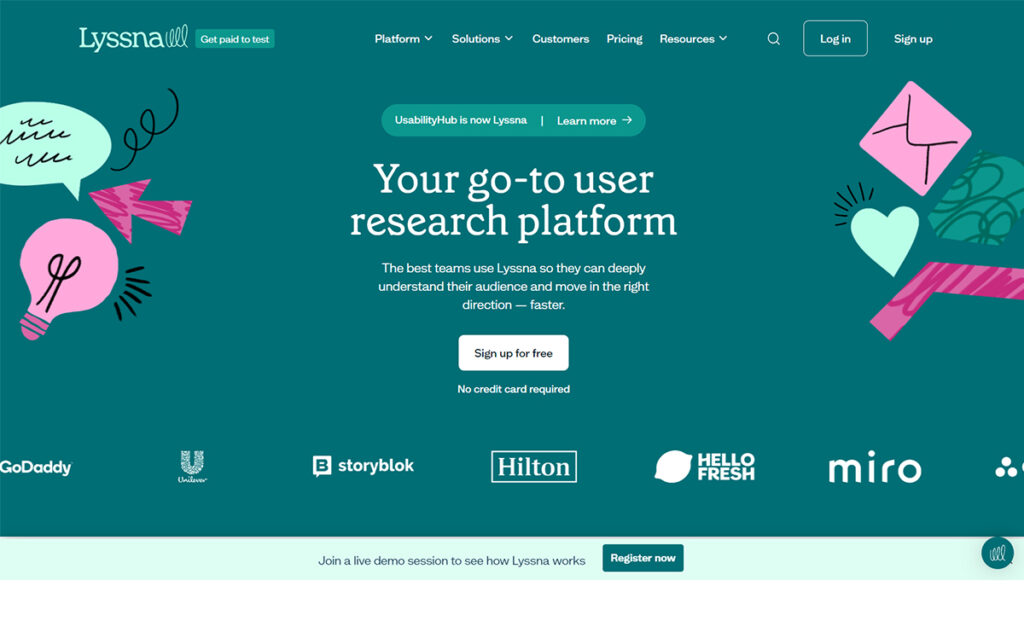
Both Lysnna and UserTesting have similar use cases, but Lysnna is more suited for people who have no expertise in the field of market research. Moreover, Lysnna supports more integrations like Figma, Sketch, Balsamiq, and is much more affordable when compared to UserTesting making it a promising alternative for businesses.
Pros
- Lyssna allows users to perform surveys on parts of UI
- It offers access to multiple unmoderated tests like five-second tests, first-clicks, and prototype testing
- Lyssna is more suited for short testing projects with more participants as the cost per participant is low
Cons
- No access to pre-recorded user testing sessions
- Comes with a monthly subscription plan and you must pay for every participant panel you use which may be expensive
-
Insights Pro
Insights Pro, like every other tool on this list, is a market research tool, but what makes it stand out is its ability to incorporate emotional insights with market research. It is one of the premier offerings of Lightbulb.ai, a company that specialises in AI tools for business analytics and market research. The core offerings of Insights Pro include creative testing, UI/UX testing, user journey testing, custom surveys, live online focus groups, and 1-on-1 direct interviews.
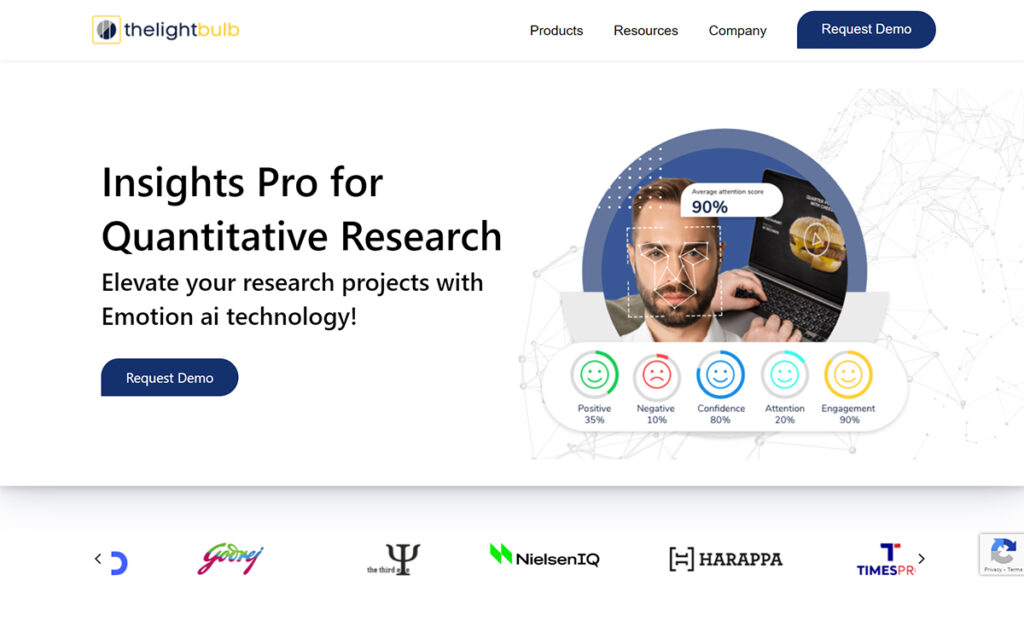
Insights Pro uses advanced AI tools like eye tracking, voice transcription, voice sentiment analysis, and FACS to add more depth to insights while offering users a way to differentiate between genuine and non-genuine responses. The best part about using Insights Pro is that, Lightbulb offers two separate tools namely Insights Pro Qualitative and Insights Pro Quantitative. With separate tools for qualitative and quantitative research, businesses only pay for what they actually use. You can book a free demo of the product here if you wish to explore the offerings of insights Pro.
Pros
- Access to emotional insights facilitating better decisions at the stakeholder level
- Separate tools for qualitative and quantitative research
- Custom sessions and access to live recorded sessions from dashboard
- Much more affordable than UserTesting
Cons
- The UI may seem overwhelming at first
-
Maze
Maze is a platform that connects product teams with users so that they can continuously test new features and improve their products. It offers businesses open access to real time user data so that they can make informed decisions and create customer-centric UI/UX experiences. Unlike UserTesting, which is a comprehensive market research tool, Maze is designed for product teams that truly care about their users and strive to create the best possible experiences for them.
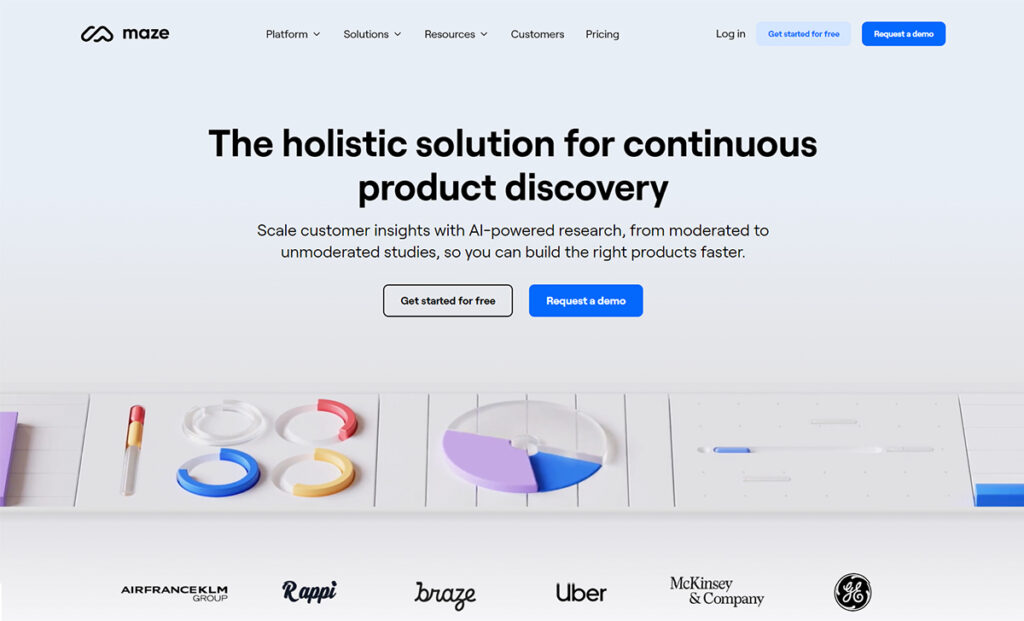
Maze is more suited for unmoderated tests as it currently lacks the ability to host fully moderated tests and hence is quite literally the opposite of UserTesting. It is also more affordable since it has targeted utility.
Pros
- Offers various tools and widgets for unmoderated tests
- Moderately priced and easy to use
- Dedicated database to collect, store, and segment participant data
Cons
- Currently does not offer access to moderated tests
-
Dscout
Dscout, just like UserTesting, is a tool that facilitates remote qualitative research for businesses, marketing managers, and product teams. However, it follows a different approach to collecting user insights. Dscout allows businesses to create missions and invite real end users to participate in these missions and share queries, images, reviews, videos, and screenshots while interacting with the product using their smartphones. These in-the-moment user insights inspire quick fixes in the UI to make it as dynamic as possible.
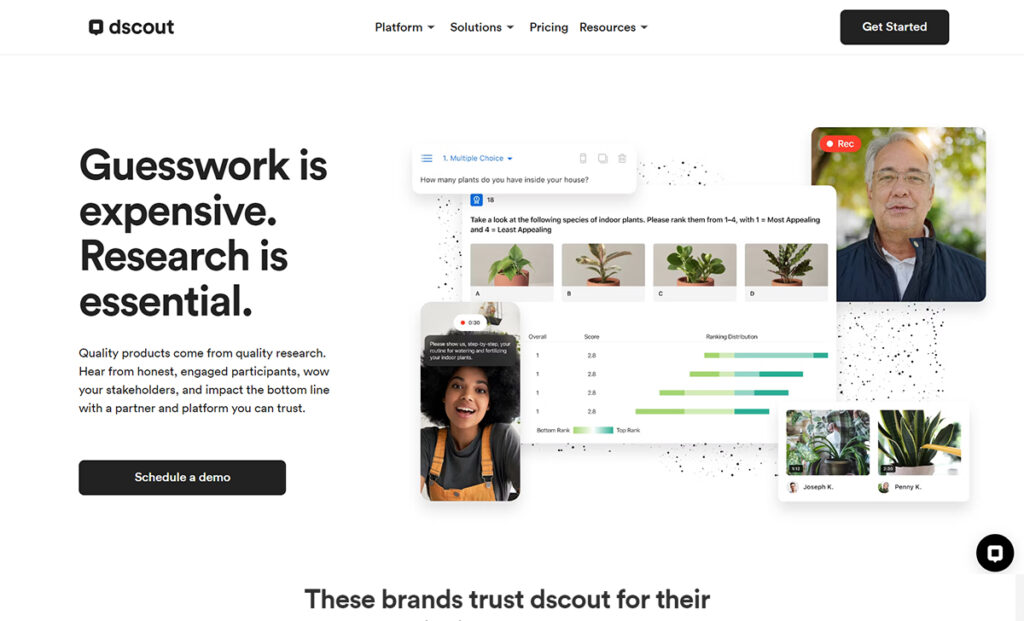
Since Dscout offers real-time insights from users in their natural environment over extended periods, it is more suited for businesses who wish to perform longitudinal analysis on their products. Participants can provide detailed narratives, reflections, and multimedia content, allowing researchers to uncover underlying motivations and empathise with users’ experiences.
Pros
Offers access to real-time insights from users in their natural settings
Suitable for conducting longitudinal studies
Offers more flexibility in terms of creating missions and picking data collection methods
Cons
Analysing qualitative data can be complex and time consuming on the platform
Might be more expensive for small businesses when compared to UserTesting
Conclusion
While UserTesting remains a powerful tool for qualitative research, its pricing and feature limitations may not suit every business. The above mentioned tools pose as promising alternatives based on the specific use cases of businesses.











